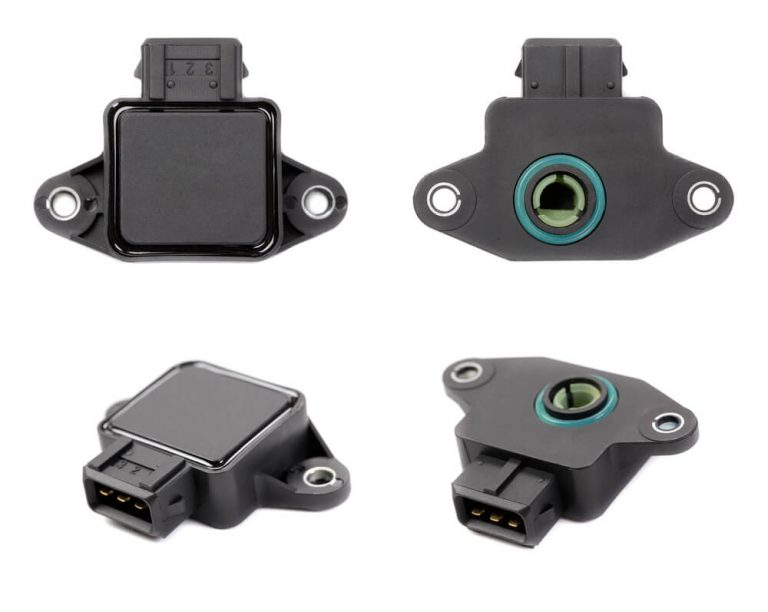Perhaps you have wondered if a vehicle could run if the throttle position sensor is unplugged? The Throttle Position Sensor, or TPS, will still allow your car to run. However, the car will not have its best performance. Keep reading to find out how a bad TPS can affect your car.
Throttle Position Sensor
The throttle position sensor is needed to monitor air intake on a car’s engine. Its main job is to be certain the proper amount of fuel is mixed with air to provide optimal results. You can monitor this as it is placed on the butterfly spindle or shaft.
A car can still run if the TPS is unplugged, which may be tempting to do if it is broken. However, the long-term consequences can greatly impact the health of your car. And it can be downright dangerous.
This little sensor’s job is to find the position of the throttle and share this information with the engine control module (ECM). This information is crucial to your car’s system, as it plays a role in airflow temperature, engine speed, and other components.
Signs of a Bad Throttle Position Sensor
When a vehicle has a bad throttle position sensor, you will clearly notice the car has bad performance. As soon as you are able to determine the performance of your car due to the TPS, it should be replaced.
Should one heed in getting it replaced, they may find they are stranded alongside the highway. Or worse, the car may start to accelerate by itself, causing the driver the inability to control the car.
In certain circumstances, your car may begin to shake. As this occurs, pressure will be put on the motor, which could cause the motor to stop running. The transmission mount could also be affected. If either of these needs to be repaired, you will most likely be shelling out a lot of money.
Check Engine Light
If you have a bad throttle position sensor, chances are the first sign will be the check engine light comes on. This may happen with several other symptoms of a throttle position sensor being unplugged or in need of repair. If you just have a check engine light come on, the issues with the car may be minimal, if any at all.
However, if you have the light pop on and there are other issues we have listed, you should have the TPS checked.
Acceleration
There is a wide variety of power problems your vehicle can face if the TPS is not up to par.
If your TPS has become unplugged or is in need of repair, your car will start to accelerate. However, it will only go up to a certain speed. In most cases, it will stay between 20 to 30 MPH. There could likewise be a lack of power that won’t allow you to accelerate.
On the flip side, the car could also begin to accelerate by itself.
Stalling or Slow Idle
Another sign that your car’s TPS is unplugged or broken is your car stalling. It may have a slow idle or misfire.
Changing Gears
When your car’s TPS has become unplugged or needs to be repaired, it could be difficult to change gears.
Buildup
A Throttle Position Sensor that has grime buildup on it can cause a car to jerk, idle low, or stall. When dirt and grime are allowed to build up, there is an interruption in airflow. Your car should have a throttle-body cleaning as part of its regular maintenance schedule. Car manufacturers state you should clean it every 100,000 miles, but others argue it is best to clean it after every 30,000 miles.
Fuel Economy
You may also experience a drop in your car’s fuel economy. This can cause you to pay more at the pump.
Fixing a Throttle Position Sensor
Replacing a Throttle Position Sensor is not very difficult if you are car savvy. A beginner can do it if they can easily follow instructions. The vehicle will need to be parked on a flat surface, and you will need gloves and protective eyewear.
The first step is to disconnect the battery. You want to be certain you are safe, and if there are live wires, you take a huge chance of getting hurt.
Next, find the sensor and unplug the wiring harness. Heed any connectors or clips, and remove them.
You will then need to remove the mounting screws. Do not toss these as you may need them when installing the new TPS.
Once you have pulled out the old TPS, dispose of it in the proper way.
Screw in the new Throttle Position Sensor, working in reverse order from above. Replug the wiring harness, being certain the clips and connectors are placed properly.
And finally, connect the battery cable.
If you have a mechanic fix the Throttle Position Sensor for you, you may pay anywhere between $150 to $250. The parts to fix the TPS are not very expensive. Most of your expenses will be wrapped up in labor charges.
Is it Worth it to Replace the TPS?
You may wonder if it will be worth it to replace your Throttle Position Sensor. This will depend upon a variety of factors. First, is your car newer with low miles? If so, it is certainly worth replacing the TPS.
If you have an old car that has high mileage, or there is a lot of damage already done to the car, you may wish to sell it as is. Sticking money into the car may not be a wise investment.
In Conclusion
While you can drive with a throttle position sensor unplugged, it is best not to. A throttle sensor that is not working properly needs to be repaired as soon as possible. While a logical thought may be just unplugged if you can still drive the vehicle, know that you can cause yourself more issues in the long run.



